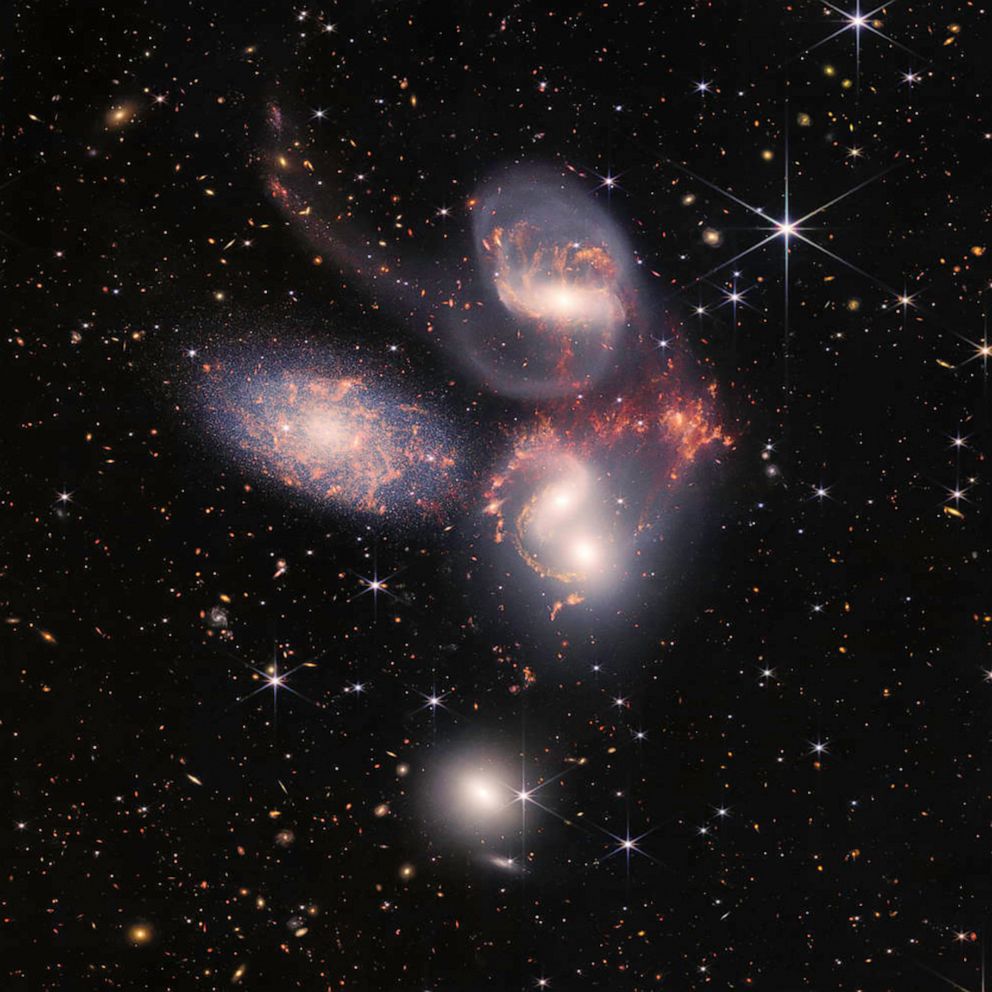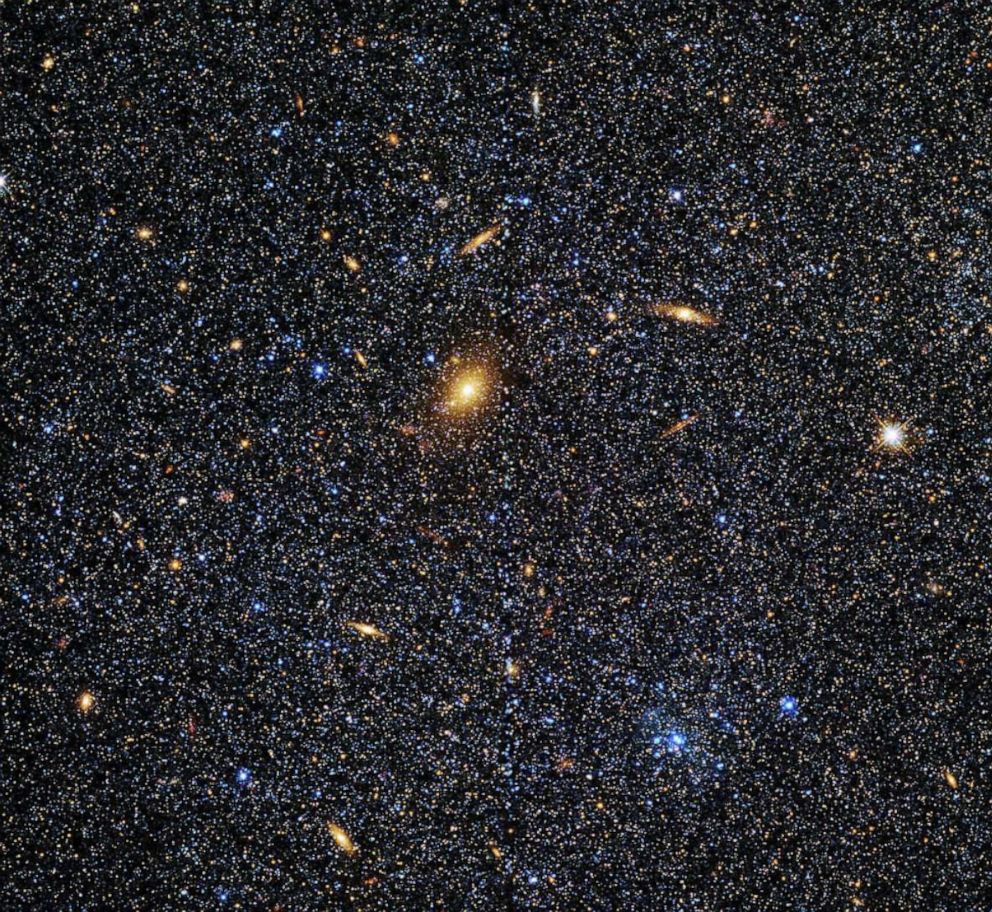Otherworldly images from NASA's James Webb Space Telescope

1 of 21
The James Webb Space Telescope captured a new image released Aug. 2, 2023, of the galaxy cluster known as "El Gordo," revealing distant and dusty objects never seen before. El Gordo is a cluster of hundreds of galaxies that existed when the universe was 6.2 billion years old. It's the most massive cluster known to exist at that time. El Gordo acts as a gravitational lens, distorting and magnifying light from distant background galaxies.






















